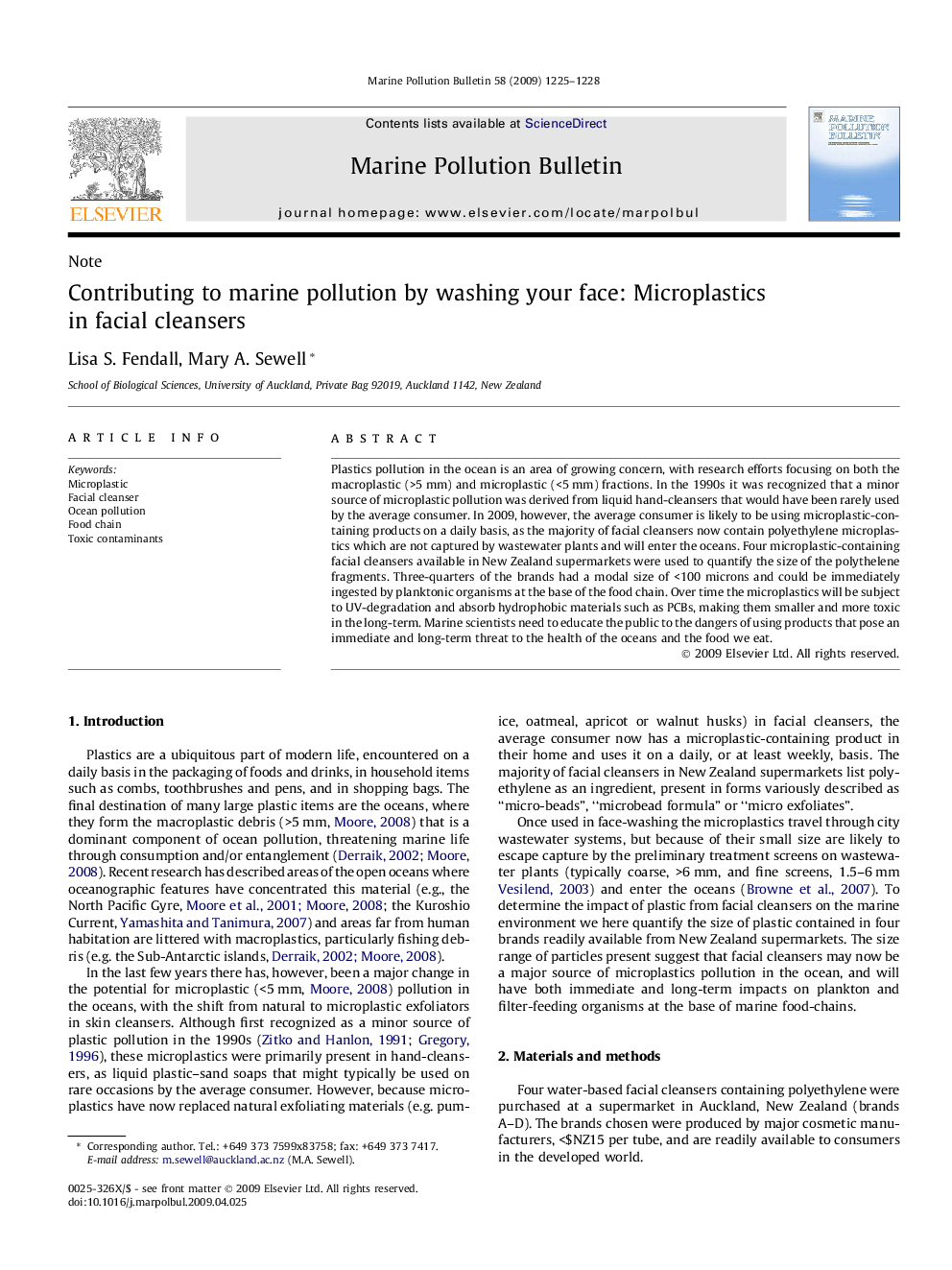| کد مقاله | کد نشریه | سال انتشار | مقاله انگلیسی | نسخه تمام متن |
|---|---|---|---|---|
| 4476994 | 1315707 | 2009 | 4 صفحه PDF | دانلود رایگان |

Plastics pollution in the ocean is an area of growing concern, with research efforts focusing on both the macroplastic (>5 mm) and microplastic (<5 mm) fractions. In the 1990s it was recognized that a minor source of microplastic pollution was derived from liquid hand-cleansers that would have been rarely used by the average consumer. In 2009, however, the average consumer is likely to be using microplastic-containing products on a daily basis, as the majority of facial cleansers now contain polyethylene microplastics which are not captured by wastewater plants and will enter the oceans. Four microplastic-containing facial cleansers available in New Zealand supermarkets were used to quantify the size of the polythelene fragments. Three-quarters of the brands had a modal size of <100 microns and could be immediately ingested by planktonic organisms at the base of the food chain. Over time the microplastics will be subject to UV-degradation and absorb hydrophobic materials such as PCBs, making them smaller and more toxic in the long-term. Marine scientists need to educate the public to the dangers of using products that pose an immediate and long-term threat to the health of the oceans and the food we eat.
Journal: Marine Pollution Bulletin - Volume 58, Issue 8, August 2009, Pages 1225–1228